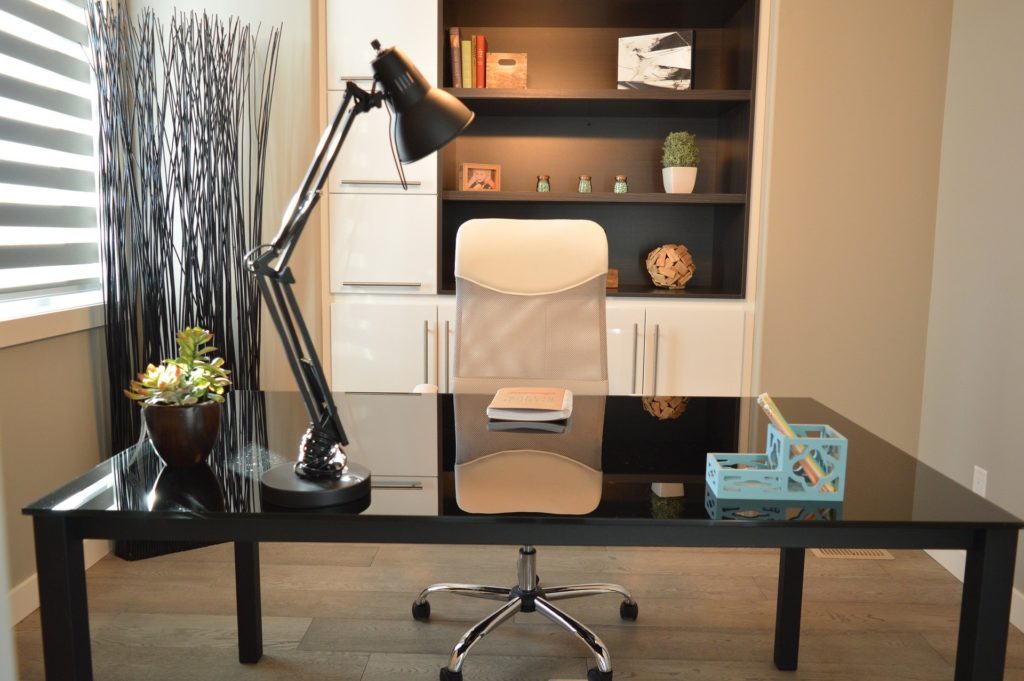Dr Rachel Lewis, Registered Occupational Psychologist and Senior Lecturer in Organizational Psychology shares her tips for creating a safe and productive work or study environment at home.
Image credit: Desky
The coronavirus pandemic and ongoing lockdown have meant dramatic shifts in the way we work, much of which is beyond our control. Many of us are now working from home, sharing study space with housemates or family members and juggling childcare and other responsibilities into the mix.
One thing we can take control of, however, is how we set up our workspace to support mental and physical health during this challenging time. The tips in this blog will help you to create an effective workspace, plan manageable routines and mitigate some of the stress that comes with adapting to a new way of work.
Step 1: Choose your workspace
As we continue to work remotely, it may be tempting to gravitate to your duvet or sofa and work in comfort, but doing so makes it difficult to manage the boundary between work and other areas of your life.
Ideally, your workspace should be a separate area of your home that you can go to and leave as if you were going to work, whether that’s an office, desk or seat at your dining room table. This prevents disruption to the rest of your home and helps you psychologically to feel ready for work in that space.
Step 2: Give your environment some love
It’s amazing the difference that a few small touches can make to your work environment. Do you have access to natural light? Do you have a plant that could provide you with a more natural environment? While we’re in a state of uncertainty about how long lockdown could last, it’s important to create a space where you feel comfortable working.
Think also about how to set up your desk to support your posture – could you put a few books under your laptop, or place a cushion behind your back, to help sit in a way that won’t lead to back or neck pain? Physical and mental health are closely linked, so by taking care to avoid aches and pains, you’ll be helping your mind too.
Finally, scan the area to make sure it’s safe – are there any stray laptop wires that could be trip hazards to you or a family member, for example?
Step 3: Define your working hours
Without the physical boundaries that come from commuting to work, it’s tempting to just work around the clock. To ensure you take time to rest and recuperate, set (and stick to) a time to finish work each day. This time may have changed from your usual hours to accommodate other commitments – you could specify your new working hours in your email signature, so people know when you will be available.
If possible, try to use separate devices for work and leisure – if you have been provided with a laptop or phone line for work, turn these off at the end of your working day to avoid the temptation to keep connected.
Step 4: Be kind to yourself
The situation we’re living through represents a significant period of readjustment, so don’t be too hard on yourself if working from home still feels alien. Set yourself goals, but be prepared for those to flex sometimes. Be kind to yourself, be kind to others and let’s help each other through until we meet in person again.
Further Information:


The biggest problem for many will be separating work- and living space in the home (Step 1). Ideal though this is, space costs money, so will there be a demand for larger places to live? The knock-on effect of this is greater land use and less-dense city development, moving away from the ideal of a compact city which allows – and encourages – more efficient use of public transport. This recent BBC article gives additional views: https://www.bbc.co.uk/news/uk-52767773.
Apart from the economic and spatial challenges, what does this mean for the large supply of existing housing stock whose ‘turnover’ is perhaps 2% per annum? In contrast, commercial developments with their shorter-term leases can be redeveloped sooner. For example, much of central London is now into its second-generation of post-war commercial development.
Can architects rise to the challenge of designing multi-purpose space to allow home -and work-life to take place in the same place, maybe or maybe not simultaneously?
So, Isobel, while your points are all worthwhile, I suggest they should be nuanced as ideals which may not be achievable in their entirety in practice but nevertheless deserve consideration.